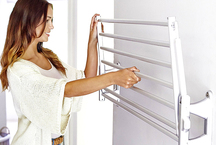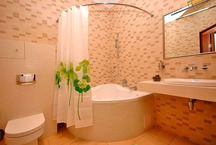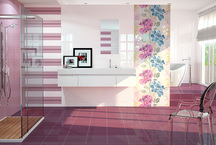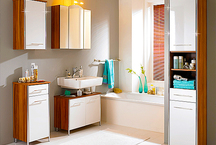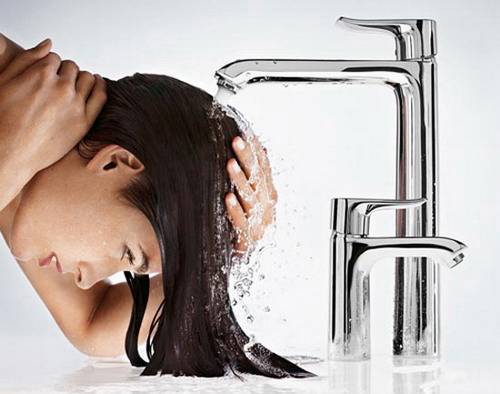
How simple it was during the Soviet era, when in every house there were almost identical two-valve bath mixers. Let them require frequent repairs and did not differ in exquisite design, but did not generate the flour of choice when buying.
Today the situation is different. Not only that the choice of sanitary products is huge, but product modifications are becoming more and more. Therefore, the question how to choose the best bathroom faucet unwittingly becomes relevant and very difficult.
When buying, you need to take into account a lot of nuances: from the installation site to the manufacturer. Let's try to develop a competent strategy for choosing a faucet to choose not just the best copy, but ideally suited exactly to your bathroom. To do this, consistently answer the questions:
- mixer assignment;
- place and method of installation;
- type of adjustment;
- view spout;
- material;
- price and manufacturer;
- color and design.
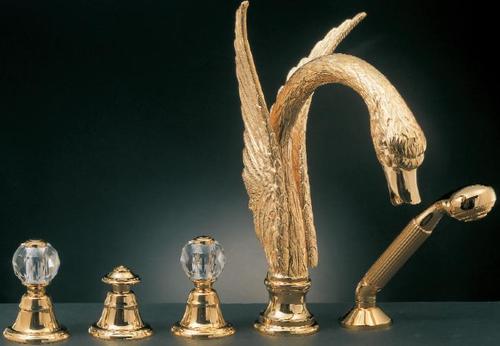
Photo: www.goldsan.ru
Types of bathroom faucets: the subtleties of choice
In the bathroom can be installed a lot of mixers:
- for shower;
- for the sink;
- for the bath itself;
- for a bidet, if the bathroom is combined.
Each type has its own specific features that are recommended to consider when choosing. In the shower, and it can be a cabin, box or just a panel, most often the mixer comes in the kit. If not, then when buying it you should give preference to the compact version or purchase a special modification without a spout, so that when the system is running, water will flow directly into the shower head.
For sinks European mixers are increasingly being chosen, the model of which implies the presence of a special bottom valve for adjusting the opening / closing of the drain. Installation of such a mixer is either on the wall, or on the sink itself, depending on the type of plumbing and pipe installation.
Talking about the mixer For bathroom, usually means products that serve to adjust and distribute water to a shower or faucet at the user's choice. Such equipment is presented in a wide range and allows you to meet the most demanding requirements of customers.
Separately, we mention the universal mixer, which can serve to supply water to the sink or to the bath itself. The Soviet name of such a mixer - "goose" - It got him thanks to the elongated shape of the spout. The equipment itself is installed above the bathroom, but next to the sink, and the spout is turned from one sanitary ware to another. Now such structures are becoming less common, as they are not the most presentable design and also require systematic repairs due to the rapid wear of the rubber gasket.
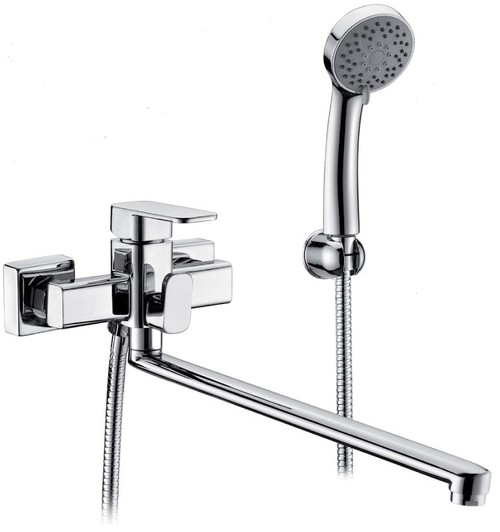
Photo: www.am-line.ru
Mixer installation: “you need to know the places”
Total provided three types of installation bath mixers. Traditional (fastening on the wall) and modern (on the side of the bath or on the floor). If about wall mounting everything is relatively clear, then the other two types require some explanation.
Mixer installation on the side of the bath possible only in the case of holes prepared by the manufacturer of plumbing for this. That is, this method is definitely unacceptable for cast-iron variants, but it is very common in acrylic baths and is often found in steel products. Place of installation is determined solely by the design of plumbing.
Floor Mixers - seldom found option, their installation is conducted on special racks or podiums. They are expensive, but look very stylish - where it’s appropriate. In the usual bathroom of a standard apartment, they are more likely to cause a smile.
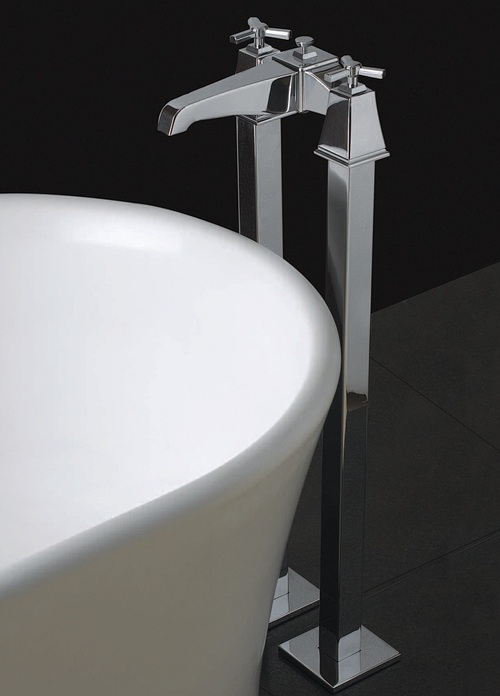
Photo: www.santeh-import.ru
Most manufactured faucets are designed for mounting on the wall, when the installation is carried out directly on the pipes of hot and cold water.This method is distinguished by reliability, convenience for repair and maintenance, as well as versatility, since it does not depend on the type of plumbing and other aspects.
The choice of bathroom faucet on the functionality
This is perhaps the most important point of all considered, since it is he who determines the usability of the equipment, its aesthetics and its correspondence to different design styles. The functionality of the mixers are divided into four types.:
- Two-valve or double-lever;
- Single gripper (single lever or "one-handed");
- Thermostatic;
- Sensory.
Two valve faucets - the classic version, the design of which provides a pair of independent elements - valves or levers that are responsible for supplying and adjusting the pressure of hot and cold water. They are not very economical, since they take time to adjust the required temperature and do not allow you to quickly adjust the flow rate. In addition, two-valve mixers are subject to frequent repairs due to a quickly wearing sealing gasket. If, according to the style of the bathroom, the classic version of the faucet asks there, then you should take a look at the analogs - two-lever solutions.
They differ from valve modifications in that the adjustment of water is carried out not by scrolling the valve several times around its axis, but by changing the angle of rotation of the handle by 90 or 180 degrees. Instead of a sealing rubber valve, ceramic perforated plates are installed in the design, which are characterized by a long service life without damage and wear. Nevertheless, the demand for such mixers, as for two-valve mixers, is constantly falling. Buyers are moving away from the classics, preferring innovative approaches in the design of mixers.
Single capture or single lever mixers - The most popular options for today. Their main distinguishing feature is the presence of one knob, which, working on the principle of a horizontal joystick, allows you to adjust the temperature and intensity of water flow. Easy to use, they are convenient even for children who find it very difficult to “tune” the water by twisting the valves.
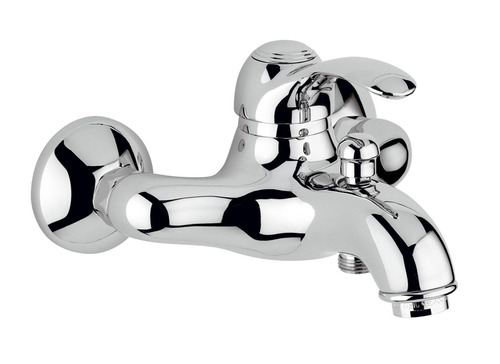
Photo: www.santehnika.azzuro.ru
Great bathroom solution - thermostatic mixers. Their device allows you to configure all the important parameters for water treatment, which will remain unchanged with each subsequent inclusion of water. The ideal solution to protect users from the instability of the water supply system. Buyers delighted: "Thermomixer - like a cool foreign car, traveled - and our Zhiguli is already reluctant ...»
Touch Faucets do not have a handle in principle - the inclusion provide sensitive sensors. The water turns on when the hand is brought to the tap and turns off on its own when the person stops washing. The products operate from the mains or batteries, but they spend little energy, and therefore are considered very economical. In addition, users note another advantage: "So that children do not get used to messing with water regulators ..."
Waterfall in the bathroom: types of faucets on the type of spout
The goose mixer was already mentioned in the article, so we will not return to this model, but we will consider two more options: a shortened spout and cascade type equipment.
Shortened spout - the most familiar and convenient design for use in the bath. Spout mixer is not much issued for the level of the side, but is convenient for washing hands and washing. If necessary, you can even wash your hair under it.
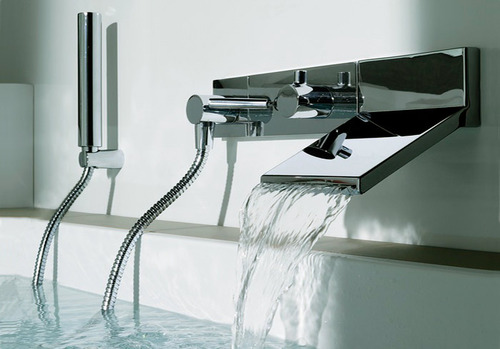
Photo: remontnikdoma.ru
Cascade Mixers - An unusual choice for our bathrooms, as the products in principle do not have a spout, and water flows directly from the body of a wide stream. Many cascade mixers are reminiscent of miniature waterfalls, but buyers evaluate their usability ambiguously. However, the excitement prevails: “I look at the falling waterfall in the bathroom - and just bastard of pleasure!»
Brass, chrome or plastic: which is better
On the one hand, it seems that when choosing a mixer material is not the most important point. But since the strength of the case, its environmental friendliness and resistance to corrosion are determined by this very moment, then you should know what to prefer in the store. Most often, manufacturers offer solutions from:
- Brass;
- Chromium;
- Plastic.
The first and leading place in this top three is, of course, brass, because this material meets all the basic requirements for plumbing fixtures. In second place - chromium with good strength and hygienic indicators, and plastic can only offer low cost and corrosion resistance.
All other aspects of choice: manufacturer, color and design are left to the user. Rating the best faucets for baths will help determine the first point, and the remaining parameters are selected exclusively on an individual basis.
